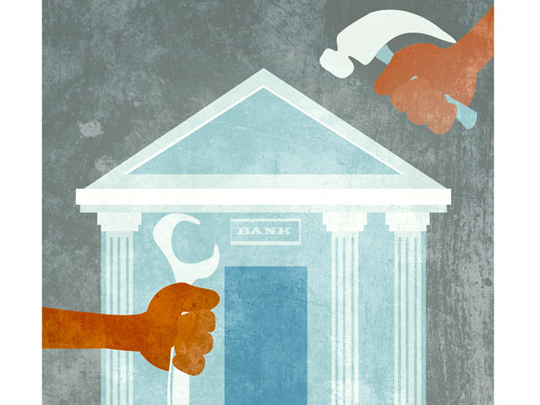
An unstoppable wave of digitalisation is threatening to transform the retail banking industry as completely as the music and book business. New pure-online retail banking players are chipping away at the profitability of traditional banks, which are burdened by legacy technology and processes.
With the UAE now ranking as one of the world’s top three adopters of mobile banking (according to SAP’s recent global study on technology in banking), as well as an early adopter of online banking, the future is clear for the retail banking sector in a country where the smartphone is ‘king’.
The process looks unstoppable. According to Juniper Research, 800 million people will use mobile banking services in 2014; in 2019, there will be more than 1.75 billion mobile banking users, or 32 per cent of the global adult population.
Mobile banking has traditionally tended to be strongest among the “unbanked” and “under-banked” populations of the developing world, such as some African countries. (Kenya is the world leader in mobile money services.)
The UAE is different — an affluent and advanced country with an established traditional banking sector and a clear vision to create a smart economy and society. This is driving consumers to smartphones and retail banks to innovate in response.
Retail banks are currently suffering disintermediation in key parts of the financial value chain. To succeed, they need to focus on creating new business models, adopt a “digi-local” strategy, adapt their customer service to the new digital environment and rely (heavily) on an innovative IT department.
The success of digital banking services on mobiles and tablets is going to accelerate this transformation by reducing the need for physical interaction with branch advisers, which may kill the traditional branch model. But new threats also create new opportunities and retail banks that choose to innovate in technology and business models can consolidate their positions as leaders in a new digitalised world.
Is there a future for the branch office? In addition to powering a revolution in financial services products, digitalisation is also transforming the public face of the retail bank. Where the branch once ruled, now retail banks need to compete with new nimble players that have no physical customer-facing presence at all. Everything can be done online.
To compete with these new players, banks are adopting a “digi-local” strategy. One part of this is launching their own versions of online banks, fully differentiated from their branch-based brands. The other is rethinking the role of the local branch network: instead of locations where everyone can carry out all their banking, they are looking to create specialised environments for different segments of customers.
Branches will continue to be relevant but there will be many different types, including flagship branches and pop-up branches derived from other industries — and all of them will be much more digital intensive.
Other similar initiatives include hybrid bank coffee shops seen in Toronto that target the wealthy Y Generation. Banks are also looking to simply shrink the footprint and associated cost of the branch in the shape of micro-branches in the US and even nano-branches in Canada.
Banks in China have been opening what they call ‘wealth lounges’. They don’t look like branches; they look like five-star hotel lounges, where high-value customers are given personal attention.
What does this all mean for customer service? A future branch may look more like an Apple Store rather than a counter with seated bank tellers.
However, contact centres and online channels are just as important as face-to-face contact. Customers are looking for an immersive ‘omni-channel’ experience, where they can switch seamlessly back and forth, between different channels.
The digital experience is also increasing customer expectation about responsiveness and transparency. Customers want to know that you are taking care of their problem, and they want a real-time status report. The good news is that customers are happy to collaborate.
More and more banks are embracing the potential of new banking technologies in both their internal operations and delivery channels. This revolution is expanding rapidly and it is already helping banks roll out new services and expand it to new unexplored frontiers. In light of these developments, many questions need to be addressed in the banking sector, including:
How will new technologies assist in advancing banks’ classical services and introducing new solutions for customers — any where and any time — and changing the customer experience?
How are the new e-channels helping in establishing new delivery platforms?
How will the new services force banks to implement restructuring plans leading to a totally novel and innovative e-banking culture?
How can e-banking plans help in expanding banking services, and fit well in the banks’ overall strategy?
The IT department can play an innovative role in the transformation of retail banking, such as by proactively supporting the development of mobile banking apps. Credit Agricole, for example, has opened a new app store that invites external developers to create apps for its customers.
Traditionally, bank applications have a lifespan of tens of years, compared to mobile applications downloaded from an app store, which have a lifespan of six to nine months. The IT department can help retail banks meet their digital challenges, which is essential in a world where most customers’ data will reside on a device.
CREDIT: The writer is the Head of Sales — Middle East and Country Manager — Lebanon, Orange Business Services Middle East.












